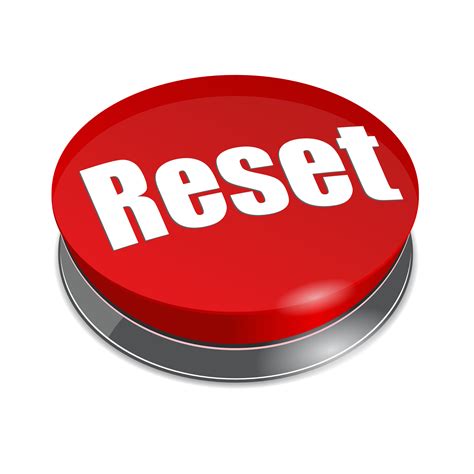What are Design Item IDs and Why Do They Matter?
Design item IDs are unique identifiers assigned to individual components, symbols, footprints, and other design items in electronic design automation (EDA) tools. These IDs play a crucial role in maintaining the integrity and consistency of a design throughout the development process. They enable designers to:
- Track and manage individual design items
- Establish relationships and dependencies between components
- Ensure proper synchronization between schematic and PCB layouts
- Facilitate design reuse and collaboration among team members
When design item IDs are reset or lost, it can lead to significant issues, such as:
- Broken references between schematic symbols and PCB footprints
- Inconsistencies in bill of materials (BOM) and component placement
- Difficulties in updating and maintaining the design over time
- Reduced efficiency and productivity in the design process
Table 1: Examples of Design Item IDs in EDA Tools
| EDA Tool | Design Item ID Format |
|---|---|
| Altium Designer | {XXXXXXXX-XXXX-XXXX-XXXX-XXXXXXXXXXXX} |
| Eagle | >NAME |
| KiCad | UUID: xxxxxxxx-xxxx-xxxx-xxxx-xxxxxxxxxxxx |
| OrCAD | @DESIGNATOR |
Common Causes of Design Item ID Loss
There are several scenarios in which design item IDs can be unintentionally reset or lost, leading to the issues mentioned above. Some common causes include:
Updating Components from a Schematic Library
When updating a component in a design from a schematic library, the design item ID associated with that component may be reset. This can happen if:
- The library component has been modified, and its unique ID has changed
- The link between the design component and the library component is broken
- The update process does not properly preserve the original design item ID
Placing Components from a Schematic Library
Similar to updating components, placing new components from a schematic library into a design can also result in the loss of design item IDs. This issue arises when:
- The library component does not have a unique ID assigned
- The placement process does not generate a new unique ID for the design component
- The design component’s ID is not properly synchronized with the library component
Importing Design Data from External Sources
Importing design data, such as schematic symbols or PCB footprints, from external sources (e.g., third-party libraries, collaborators) can also lead to design item ID loss. This can occur if:
- The imported data does not include unique IDs for each design item
- The import process does not generate new unique IDs for the imported items
- The imported IDs conflict with existing IDs in the design database
Table 2: Summary of Causes and Consequences of Design Item ID Loss
| Cause | Consequence |
|---|---|
| Updating components from library | Broken references, inconsistencies in BOM and placement |
| Placing components from library | Difficulties in updating and maintaining the design |
| Importing design data from external sources | Reduced efficiency and productivity in the design process |

Best Practices for Preventing Design Item ID Loss
To minimize the risk of losing design item IDs and ensure the integrity of your designs, consider implementing the following best practices:
1. Use Unique and Persistent IDs in Schematic Libraries
When creating schematic library components, assign unique and persistent IDs to each component. This can be achieved by:
- Generating unique IDs using a reliable method (e.g., UUID, GUID)
- Storing the IDs as properties within the library component
- Avoiding manual modification of the IDs once assigned
2. Maintain Consistent Library Management Practices
Establish and follow consistent practices for managing schematic libraries to prevent ID-related issues. This includes:
- Regularly updating and synchronizing library components with the latest design data
- Documenting and communicating library management guidelines to all team members
- Implementing version control for libraries to track changes and facilitate collaboration
3. Use Schematic-PCB Synchronization Tools
Leverage schematic-PCB synchronization tools provided by your EDA software to ensure proper mapping and updating of design item IDs. These tools help:
- Automatically generate and maintain unique IDs for design items
- Synchronize IDs between schematic and PCB layouts
- Detect and resolve ID discrepancies and conflicts
4. Perform Regular Design Audits and Checks
Conduct regular audits and checks on your designs to identify and address any issues related to design item IDs. This can involve:
- Running design rule checks (DRC) to detect broken references and inconsistencies
- Verifying the integrity of the BOM and component placement data
- Comparing design item IDs across schematic and PCB layouts

Troubleshooting and Recovering from Design Item ID Loss
Despite best efforts, design item ID loss may still occur. In such cases, follow these steps to troubleshoot and recover from the issue:
- Identify the scope and extent of the ID loss (e.g., specific components, entire schematic)
- Locate the original library components or design data with the correct IDs
- Manually update the affected design items with the correct IDs
- Re-synchronize the schematic and PCB layouts to ensure consistency
- Verify the integrity of the design through DRC and manual checks
- Document the issue and the resolution steps for future reference
If the ID loss is extensive or the original data is not available, it may be necessary to recreate the affected design items from scratch. In such cases, prioritize the most critical components and gradually rebuild the design, assigning new unique IDs as needed.

Frequently Asked Questions (FAQ)
1. What is the difference between a schematic symbol and a PCB footprint?
A schematic symbol represents the electrical functionality of a component, while a PCB footprint represents its physical dimensions and layout on the printed circuit board. Design item IDs are used to link these two representations and ensure consistency between the schematic and PCB designs.
2. Can I manually assign design item IDs?
While it is possible to manually assign design item IDs, it is generally not recommended. Manual ID assignment can lead to duplicates, inconsistencies, and maintenance challenges. Instead, rely on the auto-generated IDs provided by your EDA tool or use a scripting solution to generate unique and persistent IDs.
3. How can I check if my design has lost or reset design item IDs?
You can check for lost or reset design item IDs by:
- Running design rule checks (DRC) to identify broken references and inconsistencies
- Comparing the IDs of components in the schematic and PCB layouts
- Reviewing the bill of materials (BOM) for missing or duplicate entries
- Visually inspecting the design for misaligned or missing components
4. What should I do if I encounter design item ID loss during a project?
If you encounter design item ID loss during a project, follow the troubleshooting steps outlined in the article to identify the scope of the issue and recover the correct IDs. Communicate the issue to your team members and document the resolution steps to prevent future occurrences.
5. How can I ensure design item ID consistency when collaborating with external teams?
To ensure design item ID consistency when collaborating with external teams:
- Establish clear guidelines and standards for assigning and maintaining IDs
- Use version control systems to track changes and merge design data
- Regularly communicate and sync design data with external team members
- Perform periodic design audits and checks to identify and resolve ID discrepancies
Conclusion
Design item ID loss is a critical issue that can significantly impact the efficiency, reliability, and maintainability of electronic designs. By understanding the common causes, implementing best practices, and following troubleshooting guidelines, designers can minimize the risk of ID loss and ensure the integrity of their designs throughout the development process.
As the complexity of electronic systems continues to grow, effective management of design item IDs becomes increasingly important. By adopting a proactive approach and leveraging the tools and techniques discussed in this article, designers can streamline their workflows, reduce errors, and ultimately deliver high-quality products to market faster.

No responses yet